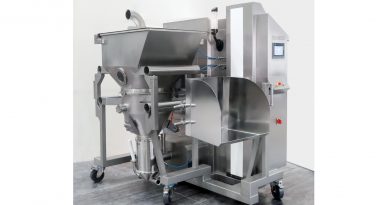Intermediate analysis of Moderna’s Phase I Zika Vaccine (mRNA-1893)
The first intermediate analysis of the Phase I Zika vaccine candidate sample (mRNA-1893) reveals that the dosage levels of 10 μg and 30 μg seroconverted 94% and 100% of seronegative participants, respectively, and effectively boosted seropositive participants. Both of these dosage levels were generally well-tolerated.
All four cohorts (10 µg, 30 µg, 100 µg, 250 µg) of the Phase 1 study of mRNA-1893 have been dosed. The interim analysis of the study reports safety and immunogenicity data from the 10 µg and 30 µg cohorts. Neutralizing antibody titers have been evaluated using Plaque Reduction Neutralization Test (PRNT50) and microneutralization assays (MN), which provide equivalent guidance for interpreting the neutralising of the immune response.
Following a 2-dose vaccination regimen of mRNA-1893 administered 28 days apart, the dose levels of 10 μg and 30 μg were both overall well-tolerated and no significant adverse events (SAEs) or adverse events of special interest (AESI) linked to the vaccine were observed.
Local pain at the injection site was the most commonly reported adverse reaction. Neither the second vaccine nor a flavivirus-positive baseline serostatus appeared to have compromised the safety profile.
The study also found that the dose levels of 10 μg and 30 μg produced a neutralising antibody response in both participants of the flavivirus infection-naïve (seronegative) and participants with pre-existing flavivirus (seropositive) antibodies, as demonstrated by geometric mean titers and seroconversion ratios.
A single dose level 30 μg vaccine was efficient to transform seronegative participants from baseline flavivirus. Nevertheless, a two-dose sequence offered 28 days apart demonstrated a strong advantage.
In the flavivirus-seronegative group, following the second vaccine, seroconversion levels reached 94.4 per cent at the dose level of 10 μg and 100 per cent at the dose level of 30 μg, based on PRNT50. MN data were consistent with PRNT50 data.
In the flavivirus-seropositive group, the proportion of participants attaining a 4-fold boost in pre-existing PRNT50 titers after the second vaccine exceeded 50 percent at the dose level of 10 μg and 75 percent at the dose level of 30 μg, depending on the PRNT50. MN data remained true to PRNT50 data.
Tal Zaks, M.D., Ph.D., Chief Medical Officer at Moderna stated:
“I am encouraged by these interim Phase 1 data showing the ability of mRNA-1893 to elicit a strong neutralizing antibody response.”
“Our Zika program, along with our continued work on a vaccine candidate against the novel coronavirus, underscore our commitment to improving global public health through developing mRNA vaccines to prevent the spread of infectious diseases.”
The project was funded in full or in part by Federal grants from the Department of Health and Human Services; Assistant Secretary’s Office for Preparedness and Response; Biomedical Advanced Development Authority, under Contract No. HHSO10020029C. Moderna has retained exclusive rights to mRNA-1893 worldwide. Fast Track status was authorized in August 2019 by the U.S. Food and Drug Administration (FDA).
About Moderna
Moderna, Inc is developing the study of messenger RNA (mRNA) to developing a new generation of revolutionary drugs for patients. MRNA medicines are engineered to guide the cells of the body to create intracellular, membrane or secreted proteins that can have a therapeutic or preventive advantage and can treat a wide range of diseases.





